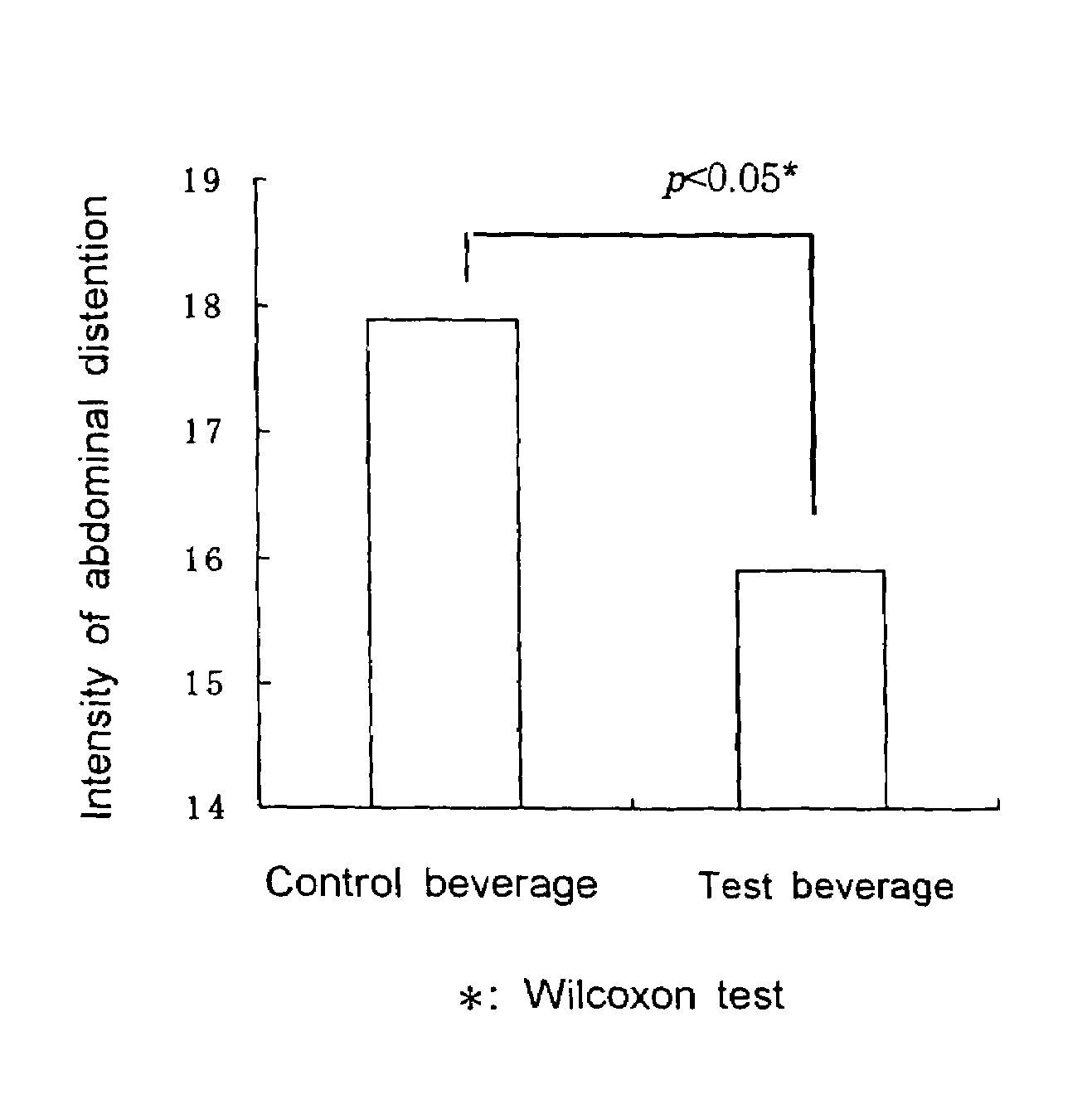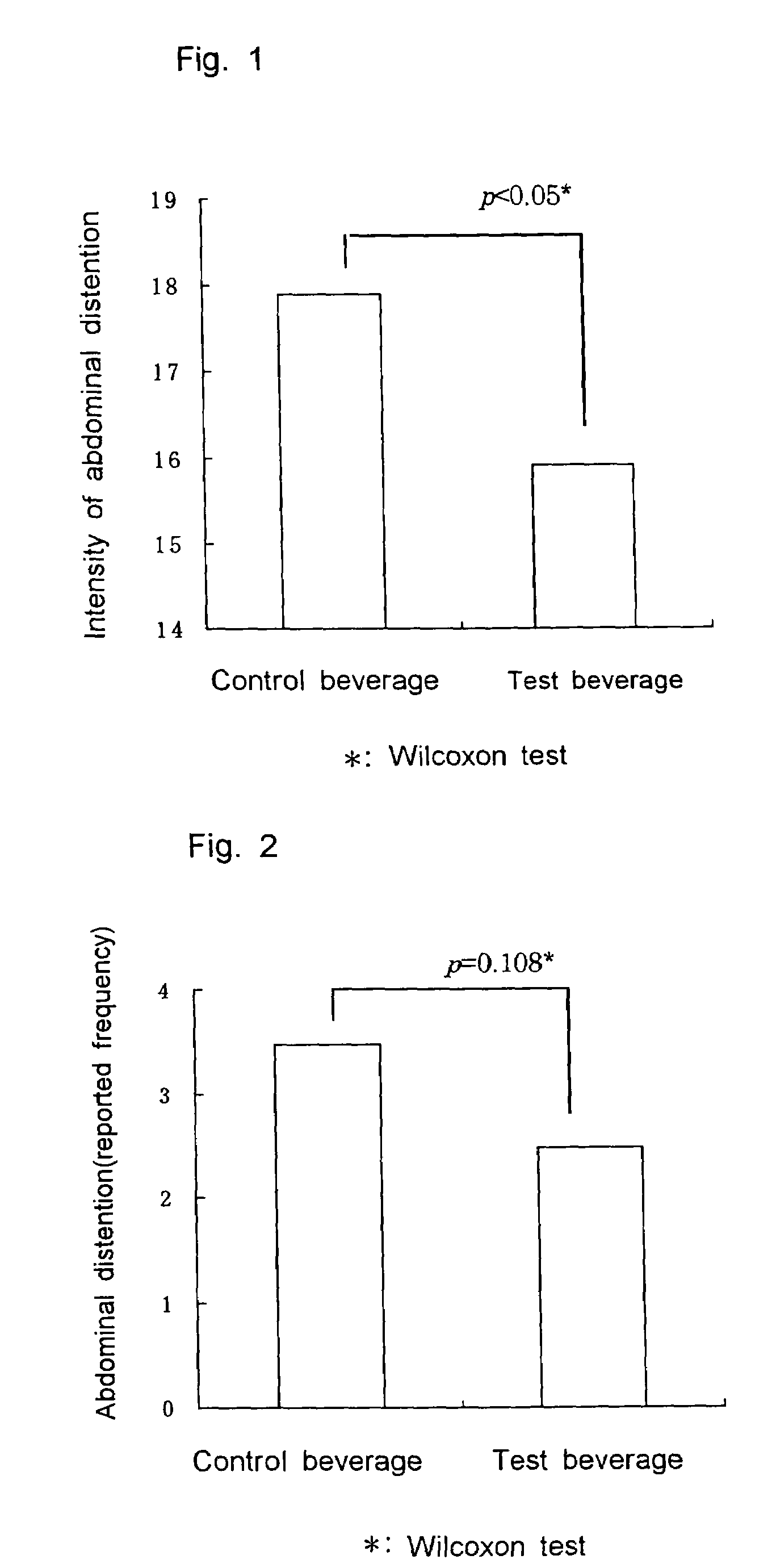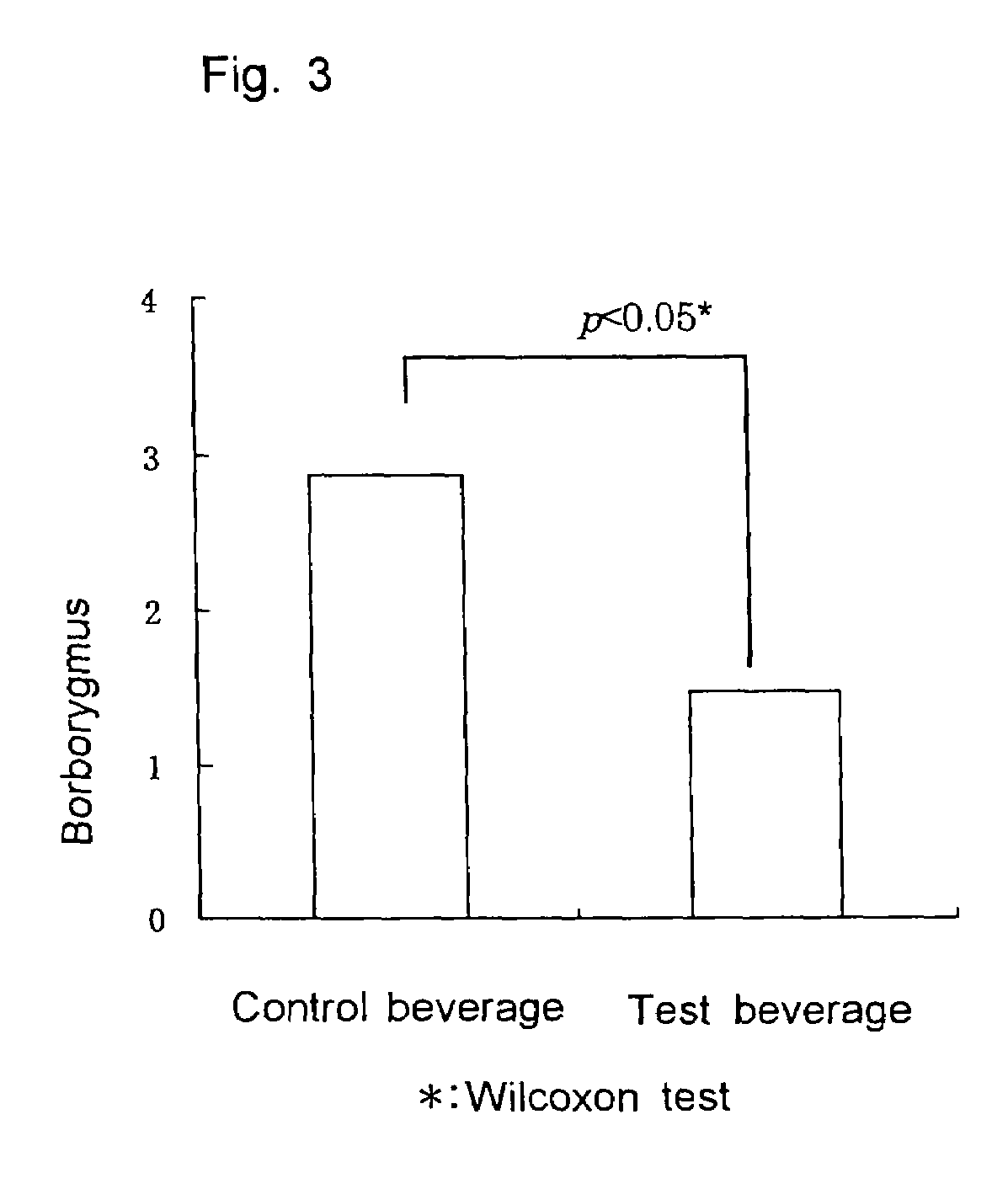Process for producing 1,4-dihydroxy-2-naphthoic acid
a production process and technology of naphthoic acid, applied in biocide, food preparation, drug compositions, etc., can solve the problems of difficult to completely remove dhna, dhna produced through such a conventional production method has not been considered useful in foods and beverages or drugs, and achieves significant abdominal flatulence, moderate abdominal flatulence, and increased breath hydrogen concentration.
- Summary
- Abstract
- Description
- Claims
- Application Information
AI Technical Summary
Benefits of technology
Problems solved by technology
Method used
Image
Examples
example 1
Production Process for DHNA-Containing Composition
[0054]Beer yeast extract (product of Asahi Breweries, Ltd.) (0.1% (w / v)) was added to a skim milk medium (a solution containing 10 wt. % skim milk powder) which had been prepared by dissolving skim milk powder in water such that the skim milk powder concentration was 10% (w / v). The resultant medium (50 L) was placed into 20 Erlenmeyer flasks (volume: 5 L each) in a divided manner, and the medium in each of the flasks was sterilized at 121° C. for seven minutes by use of an autoclave. An activated culture broth of Propionibacterium freudenreichii IFO 12424 strain (60 ml) was inoculated into each of the resultant media, and anaerobic culturing was performed in a nitrogen atmosphere at 37° C. for 72 hours, to thereby yield a composition containing 1,4-dihydroxy-2-naphthoic acid in an amount of 3 μg / ml (50 L). The aforementioned activated culture broth was prepared by inoculating Propionibacterium freudenreichii (2% (w / v)) into a TPYG me...
example 2
Production Process for Composition Containing a High Concentration of DHNA
[0055]Skim milk powder was dissolved in water such that the skim milk powder concentration became 10 to 20% (w / w), and protease [Amano A] (product of Amano Pharmaceutical Co., Ltd.) was added to the resultant solution such that the amount of the protease was 0.25% (w / w) on the basis of the entirety of the skim milk powder, followed by enzymatic degradation of the resultant mixture at 47° C. for six hours. During the course of enzymatic degradation, the pH of the mixture was maintained at 6.8 by use of an aqueous potassium carbonate solution. The resultant reaction mixture was heated at 85° C. for five minutes to inactivate the enzyme, and then water was added to the resultant mixture such that the skim milk powder concentration became 10% (w / w). After bear yeast extract (product of Asahi Breweries, Ltd.) was added to the resultant mixture such that the amount of the extract was 5% (w / w) on the basis of the ent...
example 3
Concentration of the Composition Obtained in Example 1 by Means of Column Chromatography
[0056]A column was filled with Diaion HP-20 (4 L), and the column was washed with a 0.5% (w / v) aqueous sodium ascorbate solution. Thereafter, the composition obtained in Example 1 (40 Kg) was added to the column. Subsequently, a water-soluble fraction was removed from the composition by use of a 0.5% (w / v) aqueous sodium ascorbate solution (8 L). Thereafter, an ethanol eluent (12 L) containing 0.5% (w / v) sodium ascorbate was added to the column, to thereby elute DHNA. The ethanol-eluted fraction was concentrated by use of an evaporator, to thereby produce the composition of the present invention (10 g) containing DHNA (115 mg).
PUM
 Login to View More
Login to View More Abstract
Description
Claims
Application Information
 Login to View More
Login to View More - R&D
- Intellectual Property
- Life Sciences
- Materials
- Tech Scout
- Unparalleled Data Quality
- Higher Quality Content
- 60% Fewer Hallucinations
Browse by: Latest US Patents, China's latest patents, Technical Efficacy Thesaurus, Application Domain, Technology Topic, Popular Technical Reports.
© 2025 PatSnap. All rights reserved.Legal|Privacy policy|Modern Slavery Act Transparency Statement|Sitemap|About US| Contact US: help@patsnap.com



